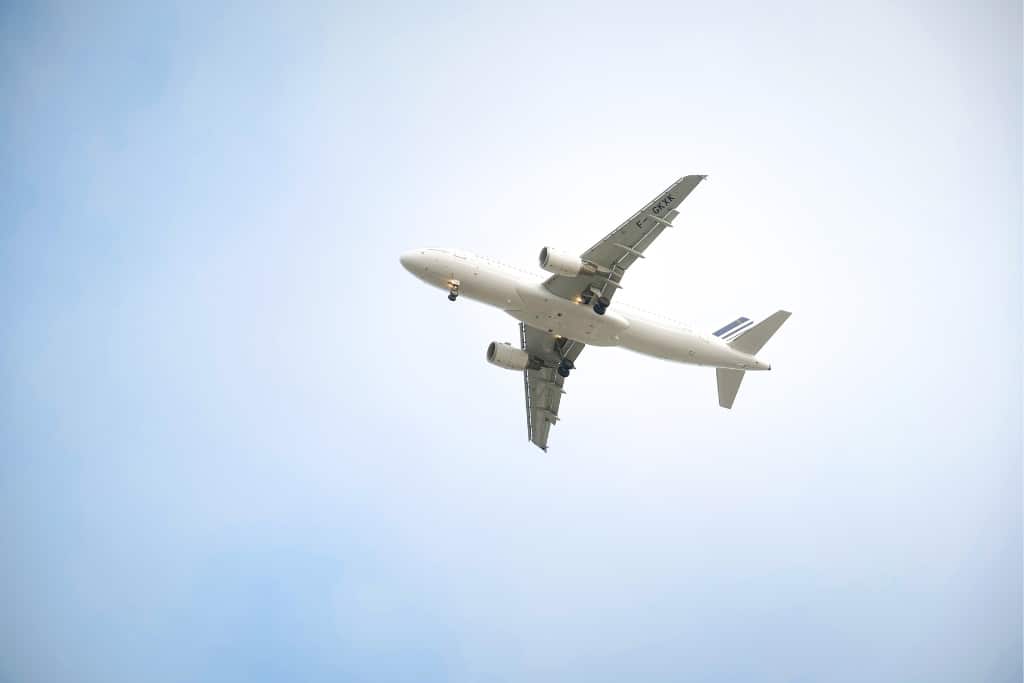Flights are huge sources of emissions. A single long-haul flight can create more carbon emissions in a few hours than the average person in 56 different countries will generate in an entire year. How can airlines cut their carbon dioxide emissions? One answer is transitioning from petroleum-based fuels to using a low-carbon alternative known as sustainable aviation fuel (SAF).
—
Sustainable aviation fuel (SAF), an alternative fuel made from non-petroleum feedstocks, is currently employed in commercial aviation to significantly reduce carbon dioxide (CO2) emissions. SAF can be blended at varying levels, typically ranging from 10% to 50%, contingent upon the feedstock type and production method. SAF can effectively reduce emissions because it is a renewable fuel, meaning that it is made from renewable resources or materials, rather than fossil fuels, including cooking oil, animal waste fat, agricultural and forestry waste, and municipal waste. What’s more, SAF can also be produced synthetically through a process that directly captures carbon from the atmosphere.
Since SAFs are derived from biomass, organic waste, and direct carbon dioxide (CO2) capture from air, they are able to utilise existing carbon from current resources. This characteristic offers a notable benefit, leading to a proportional reduction in net CO2 emissions based on the sustainable carbon content. The utilisation of current carbon can be achieved through various approaches. Alcohol-to-jet (ATJ) is one of them.
ATJ involves the conversion of biomass-derived alcohols into an SAF that matches industry standards. In the process, ATJ technologies separate polymer sugars from a biomass source using mechanical, chemical, or biological methods. These sugars are then broken down into simpler forms and transformed by specially engineered microorganisms into alcohol-based molecules like ethanol or isobutanol. Subsequently, the alcohol undergoes dehydration, oligomerization, and hydrogenation to produce a range of final fuel products, including a portion of jet fuel or blendstock.
SAF’s physical and chemical properties closely resemble those of traditional aviation fuel, enabling them to be directly blended and used interchangeably with traditional fuels without the need for modifications to aircraft engines or associated equipment. At present, SAF can be blended with traditional fuels at a different level ranging from 10% to 50%, depending on the feedstock and how the fuel is produced. There are hopes that airlines will be able to use 100% SAF by 2030.
According to the International Air Transport Association (IATA), SAF could contribute around 65% of the reduction in emissions needed by aviation to reach net zero CO2 emissions by 2050. IATA says this would require massive upscale of the technology, something that could happen as soon as next decade “as policy support becomes global.”

Read more on the topic: All You Need to Know About Sustainable Aviation Fuel
Growing Market
Since the first test flight using SAF as fuel in 2008, SAF applications have seen numerous milestone developments, leading to a flourishing market. In March 2016, United made history as the first airline to incorporate Sustainable Aviation Fuel (SAF) into its regular operations, initiating daily flights from Los Angeles Airport (LAX) fueled by AltAir. On November 28, 2023, Virgin Atlantic’s VS100 flight completed the world’s first transatlantic flight using 100% SAF. This Boeing 787 aircraft flew for 7 hours and 16 minutes from London Heathrow Airport to New York’s JFK International Airport. The SAF blend used consisted of 88% Hydroprocessed Esters and Fatty Acids (HEFA) provided by Air BP and 12% Synthetic Aromatic Kerosene (SAK) from Virent, a subsidiary of Marathon Petroleum Corporation.
These instances showcase the importance of SAF in addressing footprints in the aviation industry. Presently, over 450,000 flights have taken off using blended SAF and traditional fuels, with over 50 airlines worldwide having experience in SAF utilisation.
The increasing use of SAF also signifies the expansion of market size and the enhancement of market value.
According to a 2023 report by Precedence Research, the global sustainable aviation fuel market reached a value of US$616.91 million in 2023 and is forecasted to reach around US$14,842.13 million by 2032.
The Other Side of SAF
While SAF can significantly reduce carbon emissions compared to traditional fuels, it has not been put into commercial use widely, and as of 2020, it accounted for just 0.1% of total aviation fuel consumption.
IATA predicted that SAF production would triple in 2024 to 1.9 billion liters, though that would still only cover 0.53% of fuel demand for the year.
The high costs associated with new technologies and production methods is one of the main obstacles this technology faces. The cost of refining fuel from waste oil is typically 50% higher than traditional jet fuel, while the cost of power-to-liquid fuel could be up to 200% higher. The substantial costs for SAF’s large-scale use pose significant challenges for countries that are recovering their economy after the Covid-19 pandemic. For example, European aviation faces a bill of more than €440 billion ($485 billion) to transition to using clean fuels, according to industry estimates.
An additional challenge associated with SAF is its lower energy density compared to traditional jet fuel, with the latter allowing aircrafts to travel farther on the same volume of jet fuel than SAF. Consequently, aeroplanes would have to transport large quantities of SAF for extended flights, potentially reaching levels where practicality becomes a concern.
Despite the numerous challenges in promoting SAF, governments have introduced relevant policies to drive the development and utilisation of SAF, aiming to reduce greenhouse emissions and achieve the goal of net zero by 2050. In the US, the Biden administration has set a goal of producing 3 billion gallons of sustainable aviation fuel by 2030, which is expected to reduce aviation-related emissions by 20%. The UK government has also expressed its intent to increase the production and adoption of SAF by implementing a regulation requiring that a minimum of 10% of aircraft fuel is sourced from sustainable materials by 2030.
The UK government has declared its commitment to boosting the production and utilisation of Sustainable Aviation Fuel (SAF) through a mandate that mandates a minimum of 10% of aircraft fuel be derived from sustainable sources by 2030. In line with this, Singapore will mandate that all outgoing flights incorporate 1% sustainable fuel starting in 2026, with projections indicating an increase to 3-5% by 2030.
Alternatives
SAF is not the only solution to traditional fuels. In 2022, Rolls-Royce, a British manufacturer, announced the successful completion of a trial involving a hydrogen-powered aircraft engine, marking a significant advancement in green fuel technology and a pivotal move towards reducing carbon emissions in the aviation sector.
Outlook
In 2022, aviation was responsible for 2% of the global carbon dioxide (CO2) emissions, experiencing a faster growth rate in recent decades compared to rail, road, or shipping.
2023 marked the hottest on record, and 2024 is now on track to be even hotter. This has prompted researchers to caution that limiting global warming below 1.6C represents the best-case scenario.
Given the current environmental challenges and the urgency to mitigate carbon emissions, the shift from conventional aviation fuel to sustainable and eco-friendly alternatives has emerged as a critical and immediate necessity in the aviation industry. Science, through innovative research and technological advancements, will play a pivotal role in driving the development and implementation of these sustainable solutions, ensuring a greener future for aviation.
This story is funded by readers like you
Our non-profit newsroom provides climate coverage free of charge and advertising. Your one-off or monthly donations play a crucial role in supporting our operations, expanding our reach, and maintaining our editorial independence.
About EO | Mission Statement | Impact & Reach | Write for us














